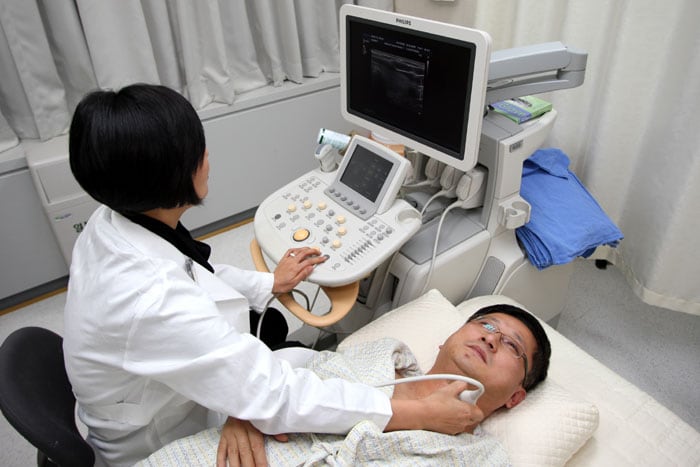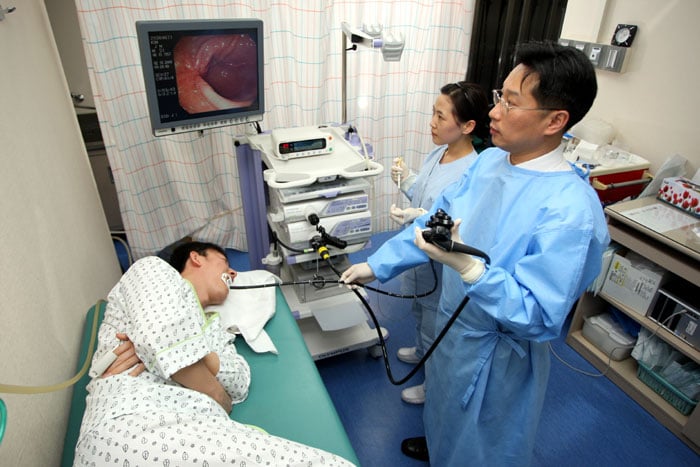The history of the healthcare insurance system in Korea traces back to 1963 when the medical insurance law was enacted. Despite its relatively short history compared to those in other countries, Korea’s healthcare system is praised overseas. This is because it is a universal healthcare system that applies to every citizen, from all walks of life, whether rich or poor. Under the system, people pay an insurance fee according to their income and can receive a wide range of medical services at low costs. It is well known that U.S. President Barack Obama praised the superiority of Korea’s healthcare system quite a few times.
However, some people are still unable to benefit from healthcare coverage. To provide better services for them, the government will now extend healthcare benefits starting in 2016.

Starting in 2016, the government will provide extended medical benefits such as free checkups for cancer and give more help to patients who suffer from major causes of death.
One of the most noticeable changes is extended services for cancer-related checkups and other cancer-related medical treatments. Cancer is the top cause of death in Korea. According to statistics from the Ministry of Health and Welfare, the number of people who suffered from cancer in 2010 was 207,085. In 2013, the number rose to 225,343, showing a steady increase every year. As such, the government has been carrying out various projects in order to thoroughly manage cancer in the long term and at the national level by establishing a 10-year plan to conquer the disease, starting in 1996.
To this aim, the government will extend the number of regular checkups that are allowed and the age range of recipients for cancer screenings starting this year. These changes will apply to the two main types of cancer — liver cancer and cervical cancer. This is because of the fast development of liver cancer and the increasing number of occurrences of cervical cancer and carcinoma in situ of uterine cervix cancer, especially among people in their 20s. Starting in 2016, people will be able to have health screenings for liver cancer every six months, not merely once per year. Those who are aged 20 or older can now start to receive screenings for cervical cancer, which until last year was previously limited to those aged over 30.

A patient receives an endoscopic stomach examination at the National Cancer Center. The government has expanded medical healthcare coverage in 2016.
Broadened benefits will also be provided to patients diagnosed with cancer. This is thanks to the extended application of healthcare insurance for patients who suffer from the nation’s main causes of death: cancer, heart disease, cerebrovascular disease and rare & intractable diseases. The government has been extending the number of items covered by healthcare insurance for patients who suffer from the main causes of death, as it costs a fortune for many patients. Thanks to its efforts, the number of items covered by healthcare insurance for the four major causes of death rose to 245 in 2015, from 25 in 2013. These items include medicine, medical treatments, such as operations, and examinations. Starting this year, an additional 134 items, such as diagnoses of cancer or rare diseases and medicine, will be included on the list of healthcare applications, the decision to receive medical treatment and gene tests.
Changes in healthcare insurance will also provide more benefits to patients who suffer from extremely rare or intractable diseases. Rare diseases are found in relatively small amounts around the world and tend to be illnesses without a designated disease code. Patients with extremely rare diseases suffer from illnesses that are unidentifiable or hard to clearly diagnose, despite continuing efforts at a diagnosis. In the past, these patients had to pay the whole cost of gene tests needed to diagnose their cancer or other rare diseases because they were not covered by healthcare insurance. Patients who suffered from extremely rare diseases or unidentified rare diseases also had to pay from 20 up to 60 percent of the cost of gene tests for a diagnosis. However, thanks to the changes undertaken this year, they will now pay only 10 percent of the cost.
Another impressive change is the inclusion of vaccinations for cervical cancer on the list of free vaccinations for children. Korea has been implementing national vaccinations for children aged under 12 since 2014. Last year, a total of 14 vaccinations were on the list, but vaccinations for cervical cancer were not covered. Starting this year, it has been added to the list, and the whole cost of cervical cancer vaccinations will be covered by the government.
By Yoon Sojung
Korea.net Staff Writer
Photos: National Cancer Center
arete@korea.kr























